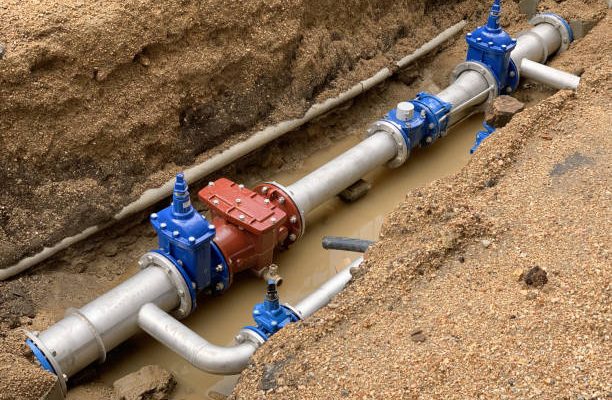No one can control the weather. Without the technical know-how from meteorologists and scientists alike, there’s no way for you to predict how hot the weather will be in a day or how much snow will come down in winter.
During the rainy season, especially when torrential rains come, the flood prone areas are hit the hardest. If you live in an area where flooding is frequent, you should take preventive measures to keep it from happening. This way, you will somehow reduce the damages caused by it on your property. And one way to do that is through land drainage.
Why Do You Need Land Drainage
Having undrained water stay for too long can damage your property while attracting pests that may harm you and the other residents occupying the house. What’s worse, it will cause your health to decline while you worry about how to do damage control for your home.
How To Encourage Land Drainage
With how unpredictable the weather’s been lately, it’s no surprise that floods can occur more frequently. However, although it’s not surprising, it’s still disheartening to see your yard ruined by flood and your house soaked in water from inside-out. To somewhat reduce the flooding, here are ways to apply land drainage on your property:
1. Install Drainage Pipes
As a homeowner, it’s your responsibility to check the property you’re intending to purchase. See if the area is wide and open for emergency drills. Ask if the house can withstand the worst natural calamities, like hurricanes or earthquakes. If your chosen property is prone to such, you should inquire about how well its drainage system works.
Of course, some may see it as a deal-breaker when no decent drainage system is available. However, for those who do house flipping or are looking for a low-priced property, this could be what you’re looking for.
Since you don’t want your property to get flooded, your first order of business should be to have quality pipes installed in it. This may involve thorough land modifications or property grading to get the underground drainage equipment such as these installed properly.
However, it would be all worth it in the end because replacing the old, worn drainage system will prevent any pests from breeding in stagnant water that could reproduce in your basement or somewhere around the house over time.
Other than the underground, consider taking a look at your home’s exterior; particularly, the gutters and downspouts. Because these two are installed on the roof, their function is to redirect water away from the house.
Gutters tend to get blocked by wet leaves or other flying objects like toys, so it’s recommended you clean them out regularly. As for downspouts, replace the pipes with better quality ones and point them away from the house.
2. Careful Landscaping
Being practical with style is any homeowner’s dream. And having gorgeous landscaping can help; both to complete your aesthetic and to further improve your land drainage. Professional landscapers will inquire about the layout of your underground drainage system, especially if you’re eying certain species of flora that grow out long roots.
In landscaping, you must learn to compromise with what’s appropriate for both your yard and your drainage. Trees provide shade while looking gorgeous in the fall, but not only do their roots get thick, they also seek out any amount of water in the soil. Because of this, they might target your pipes and squeeze their way in through the joints. In this case, make sure to place these kinds of flora away from your drainage—or at least safeguard your pipes to make them root-proof.
Landscaping also has to do with how the land itself is designed. Property grading was mentioned earlier; however, it only pointed out how it affects the underground. On the surface, sloping plays a crucial role in property grading. By sloping downward away from the house, it’ll lead the water out. If you’re living downhill with houses above you, then it’s better to have a berm or a deep ditch to keep the water from reaching your house.
3. Choose The Proper Soil
On top of the flora and its landscape, one more thing you need to pay attention to is the soil used for your yard. Despite being overlooked, it plays an important role in water accumulation across your yard.
- Clay soil: Because it grows compact when wet, it’s challenging to expel water. It causes water to accumulate quickly, which causes flooding.
- Silt soil: Standing as a solid middle ground between clay and sand, silt is of fine quality. Much like sand, it easily gets washed away when the rain comes down hard. However, because of the minerals mixed in it, silt holds water better than sand.
- Sand: Since sand is only weathered down particles of rocks, it has poor water retention, ergo, allowing it to slip away. While this may be perfect to lead water away, having too much of it—and so close to your home—may divert water into your basement.
Now, by knowing these types of soil, you can strategize how to direct the water someplace far away from your house. If possible, try using two kinds of soil on certain places around the property; for example, silt should be closer to your home while you can have sand as paths for the water to take.
Takeaway
Due to climate changes, rainstorms may become harsher than ever in the coming years, thereby causing more floods as time passes. However, you can somehow prevent or reduce any water damage by improving your land drainage.




















